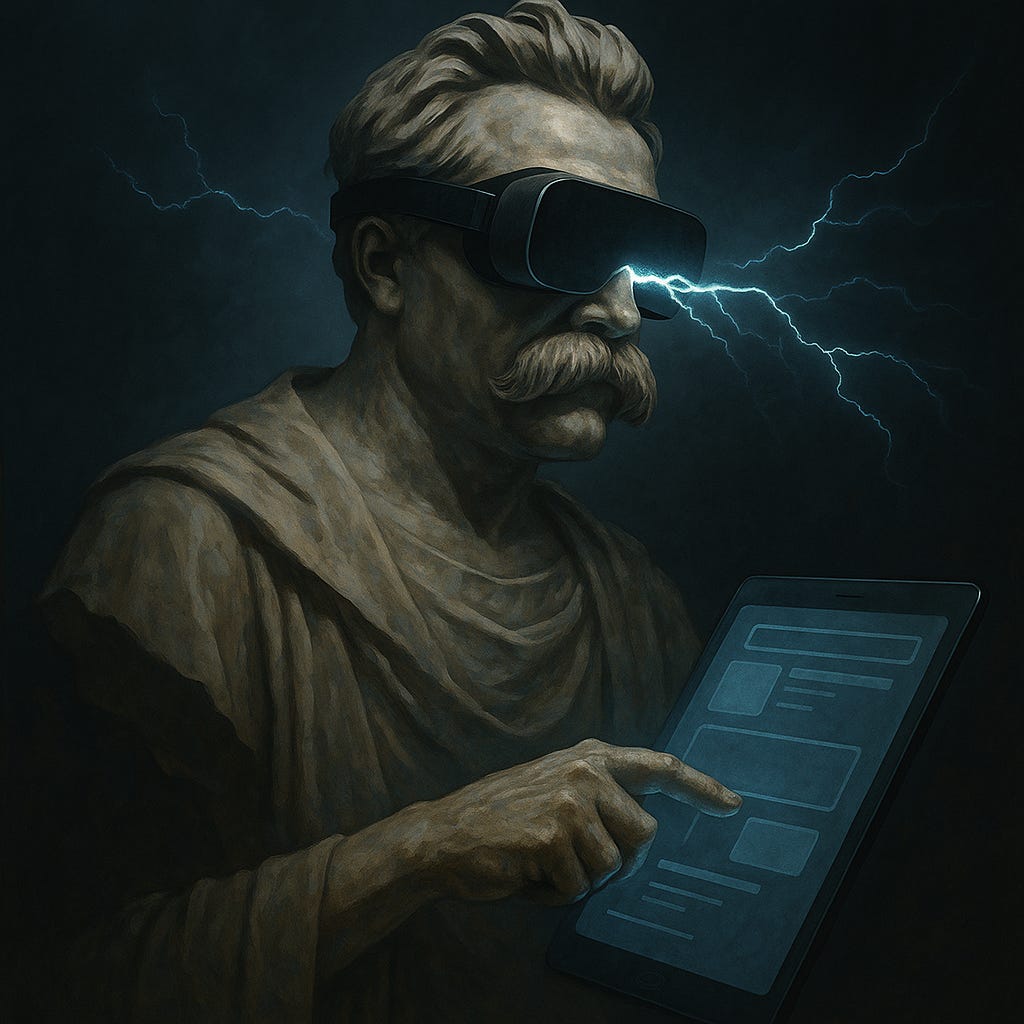Nietzsche for Product Designers: Will to Power vs. User Control
“He who cannot obey himself will be commanded.”
— Friedrich Nietzsche, Thus Spoke Zarathustra
Designers talk a lot about "user control."
Give the user choices.
Respect the user’s agency.
Make the experience feel empowering.
It’s a noble impulse. But it’s also a philosophical one. And maybe—just maybe—Nietzsche would laugh at it.
Because Nietzsche wasn’t interested in comfort. He was interested in power.
Specifically: Will to Power—the deep, evolutionary drive not just to survive, but to shape, overcome, impose, become.
So what happens when you design software not around user control… but around will to power?
User Control: The UX Dogma
The modern UX stack inherits its values from liberal humanism and post-industrial ergonomics:
Minimize friction.
Maximize clarity.
Let users feel in control.
But this assumes the user wants to be in control.
Sometimes, they don’t.
Sometimes, they want to be led.
Sometimes, they want a tool that dominates them into greatness.
The fitness app that doesn't ask—just tells.
The writing assistant that rewrites your draft, uninvited.
The AI photographer that says, “No, this is the better shot.”
Designers trained to preserve autonomy might flinch. Nietzsche wouldn’t.
The Will to Power as Design Principle
Nietzsche's "will to power" is not brute force. It’s not coercion. It’s creative domination—the force that reshapes the world, asserts form, imposes meaning.
In product terms, it's the drive to actualize a worldview through interaction.
Examples:
Apple: Shapes user habits through elegance and constraint. (No, you don’t need a USB port.)
Tesla: Forces updates remotely. The car becomes you before you consent.
Superhuman: Teaches users how to email faster by teaching them how to behave.
These are not "user-centric" products in the traditional sense.
They’re designer-willed realities that users enter.
And guess what? Users love them—because the experience feels powerful.
Nietzschean Design Moves
1. Affirmation over accommodation
Don’t build for every edge case. Build for what you believe in. Affirm your product's essence. Let users adapt.
2. Constraint as strength
Limit choices to shape better behavior. Power comes not from unlimited freedom, but from directional force.
3. Product as Übermensch
Don’t just respond to needs—overcome them. Show the user what they didn’t know they wanted. Be prophetic, not reactive.
4. Transcend empathy
Empathy is a useful input—but it can calcify into pandering. True design leadership sometimes means going beyond empathy to transformation.
The Ethical Edge
This is dangerous terrain.
Designing around power—not control—risks paternalism, coercion, or flat-out manipulation. Tech history is littered with examples. Facebook, TikTok, and engagement-maximizing dark patterns come to mind.
But Nietzsche isn’t calling for manipulation.
He’s calling for courageous creation.
The key is not dominance for its own sake, but willful meaning-making—the kind that helps users transcend themselves, not just please themselves.
“Become who you are.”
That, too, is a product vision.
TL;DR
Modern UX preaches user control. Nietzsche would ask: To what end?
What if your product doesn’t just serve the user… but leads them?
Design not for comfort—but for becoming.
Let your product have a will. Let it shape the world.
And let your users rise to meet it.


